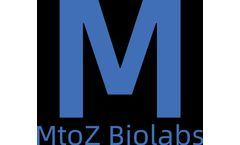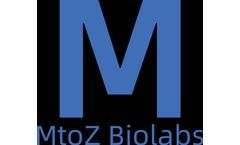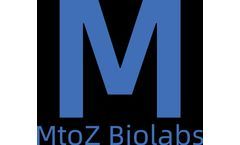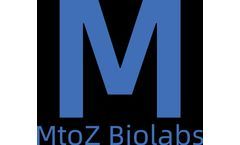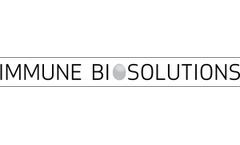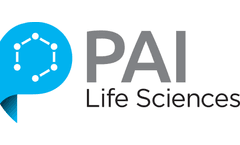Epitopes Articles & Analysis: Older
37 articles found
Therapeutic monoclonal antibodies (mAbs) are a class of antibody drugs that are highly uniform and have pharmacological effects against a single epitope obtained through molecular biology. In the process of new drug development, the study of pharmacokinetics is of great significance. ...
Their monoclonal antibodies, linkers, linker-cytotoxin molecules, and newly introduced antigenic epitopes may all have immunogenicity. This makes the immune response induced by ADC drugs more complex. ...
With technological advancements, we now have more novel avenues to choose from, such as recombinant proteins, engineered cells, and DNA encoding proteins, all of which can display a variety of epitopes or potential antibody recognition sites. Compared to these newer forms of antigens, peptides may be slightly lacking in epitope coverage, as they cannot display ...
Discovering Antibodies with Specific FunctionsIn antibody discovery, our ideal goal is to obtain diversified antibodies with different functions and capable of targeting multiple epitopes. Although the process of antibody discovery may produce binders against target antigens, it is indeed a challenging task to discover antibodies with specific functions (such as agonists or ...
This epitope can be a unique area in the target antigen with specificity, allowing the antibody to accurately recognize and bind to it; or it can be those areas with cross-reactivity, allowing the antibody to interact with other proteins with similar sequences.Determine the Type of ExperimentThe types of experiments suitable for antibodies are often related to the type of ...
Antibody SequencingAntibody sequencing can reveal antigen-antibody binding affinity, antibody epitopes, and post-translational modifications, and precise antibody characterization can ensure the best therapeutic effect.2. ...
Optimizing Antibody Characteristics By analyzing and comparing antibody sequences, we can identify key areas and sites that affect antibody performance, and then optimize and modify antibodies through genetic engineering to optimize the stability and solubility of antibodies, improve the half-life of antibodies, and enhance the safety and efficacy of antibody drugs. Mapping ...
Polyclonal antibodies are more suitable Polyclonal antibodies are heterogeneous and can recognize multiple epitopes, so they are less affected by changes in protein conformation. ...
Polyclonal antibodies are secreted by many different B cell clones and recognize multiple antigenic epitopes, whereas monoclonal antibodies are derived from a single B cell clone and are specific for only a single epitope. ...
IgG-derived antibody drugs include IgG antibodies, bispecific antibodies, Fab fragment antibodies and scFv fragment antibodies.Compared with the CDR3 region of traditional antibodies, which only has 8 to 15 amino acids, the longer CDR3 region of some nanobodies is expected to help them recognize hidden epitopes of antigens. The backbone region includes FR1, FR2, FR3 and FR4. ...
In turn, this affects the conformation of the antigen and may provide functional epitopes to the immune system of immunized individuals. Antigen Type and Applied Dose There are several binding mechanisms between antigens and APs, two of which, electrostatic attraction and ligand exchange, largely determine the adsorption and elution properties of vaccines. ...
Bispecific Antibody in ADCs Currently, bispecific antibody ADCs entering clinical practice are divided into two categories: dual-epitope ADCs and dual-target ADCs, which mainly include dual-epitope ADCs with three targets (HER2 dual-epitope, Met dual-epitope, and FRα dual-epitope), while dual-target ADCs ...
They can be linear (continuous) or conformational, depending on their structure and interactions with complementary sites on antibodies. In linear epitopes, residues are contiguous, while in conformational epitopes, the residues that make up the epitope are folded together in the antigen's structure. Epitope prediction is one of ...
Therefore, to obtain a true picture of the RNA epitope transcriptome, single-cell RNA modification sequencing and more simultaneous multi-modification sequencing techniques are available, as different RNA modifications have the potential to interact within the cellular system. ...
SnugDock Tutorials: SnugDock focuses on antibody-antigen binding epitopes and antibody drug development. It addresses challenges in predicting accurate antigen-antibody complexes and explores flexible docking to capture conformational changes during binding. ...
These vaccines are designed based on highly conserved epitopes in viral hemagglutinin, neuraminidase, or other proteins. Six universal influenza vaccine candidates are currently in Phase 3 clinical trials. ...
Why target GPCRs with antibodies? The G Protein-coupled receptor (GPCR) superfamily represents the largest and single most important family of human drug targets. GPCRs play a central role in a plethora of biological processes and are linked to a wide range of therapeutic areas including cancer, diabetes, inflammation, cardiovascular diseases, and chronic pain. Expressed in every type of cell in ...
The Fab segment of some ADC antibodies binds to epitopes of virus-infected cells or tumor cells, while the FC segment binds to FCR on the surface of killer cells (NK cells, macrophages, etc.) to mediate direct killing. In addition, the antibody component of ADC specifically binds to epitope antigens of cancer cells and inhibits downstream signal transduction of ...
Tuberculosis - a deadly disease with a huge global burden Tuberculosis continues to be the most serious cause of death from a single infectious micro-organism. Drug resistant tuberculosis is a particularly insidious manifestation of this disease for which alternative approaches to conventional therapy are required to facilitate treatment. Despite heroic efforts to develop new drugs to treat ...
However, most of these vaccines target structural protein epitopes to induce neutralizing antibody responses, which is complicated by the potential induction of antibody-dependent enhancement (ADE). ...



